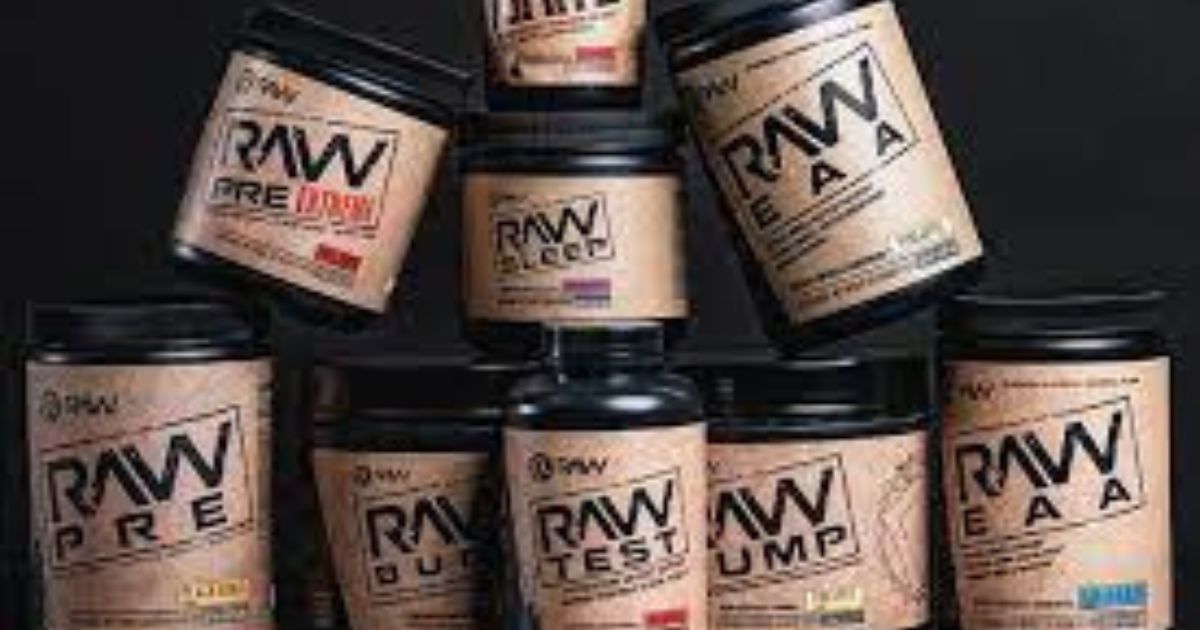Cauliflower rice is low in calories and carbs while being high in fiber and vitamins. This popular alternative to traditional rice is a nutritious option for those looking to watch their intake of calories and carbohydrates.
It’s a versatile option that can be used in many recipes, making it a popular choice for those following a low-carb or ketogenic diet. Additionally, cauliflower rice contains vitamins and minerals that are essential for overall health, including vitamin c, vitamin k, and folate.
In this article, we’ll take a closer look at the nutritional benefits of cauliflower rice and why it might be a great addition to your diet.

Credit: www.bistromd.com
What Is Cauliflower Rice?
Cauliflower rice has been a popular food trend in the past few years due to its numerous health benefits, as well as being a great low-carb alternative to regular rice. In this blog post, we will be taking a closer look at cauliflower rice and its nutritional value.
Let’s start by examining what cauliflower rice actually is.
Definition Of Cauliflower Rice
Cauliflower rice is a rice substitute made from finely chopped or grated cauliflower. It is a popular low-carbohydrate, gluten-free, and paleo-friendly alternative to regular rice, and it can be used as a base for many different dishes.
How It Is Made
Cauliflower rice is made by either grating or finely chopping cauliflower florets until they are the size of rice grains. This can be done manually with a knife or by using a food processor. Once the cauliflower is prepared, it can be cooked by stir-frying, baking, or steaming.
The Versatility Of Cauliflower Rice In Cooking
Cauliflower rice has become a popular ingredient in many different types of cuisines, as it is a versatile ingredient that can be used in many different ways. Some popular ways to use cauliflower rice include:
- As a base for stir-fry dishes
- As a substitute for regular rice in fried rice recipes
- As a stuffing for vegetables, such as bell peppers or zucchinis
- As a low-carb alternative to traditional pizza crust
- As a base for grain-free sushi rolls
Cauliflower rice is also a great ingredient for meal prep, as it can be prepared in advance and stored in the refrigerator or freezer until needed.
Cauliflower rice is a nutritious and versatile ingredient that can be used in many different ways in the kitchen. Whether you are looking to reduce your carbohydrate intake or simply add a new ingredient to your repertoire, cauliflower rice is definitely worth giving a try.
Cauliflower Rice Nutrition
Cauliflower rice has become a popular alternative to the traditional carb-heavy white rice. Not only is it low in calories, but it also provides several essential nutrients to boost your health. In this section, we’ll explore the macronutrients and micronutrients in cauliflower rice, how it compares to traditional white rice, and how it can fit into a balanced diet.
Macronutrients In Cauliflower Rice
Cauliflower rice is known for its low-calorie content and can be an excellent replacement for regular rice. Here’s a breakdown of the macronutrients in 1 cup of cauliflower rice:
- Calories: 25
- Carbohydrates: 5 grams
- Fiber: 2 grams
- Protein: 2 grams
- Fat: 0 grams
Micronutrients In Cauliflower Rice
Cauliflower rice not only provides macronutrients but also several vital micronutrients that your body needs. Here are some of the micronutrients found in cauliflower rice:
- Vitamin c: 77% of the recommended daily intake (rdi)
- Vitamin k: 20% of the rdi
- Vitamin b6: 10% of the rdi
- Folate: 14% of the rdi
- Potassium: 9% of the rdi
Comparison Of Cauliflower Rice To Traditional White Rice
One of the main benefits of choosing cauliflower rice over white rice is that it is significantly lower in calories and carbohydrates. Here’s a comparison between 1 cup of cooked white rice and 1 cup of cauliflower rice:
- Calories: 205 (white rice) vs. 25 (cauliflower rice)
- Carbohydrates: 45 grams (white rice) vs. 5 grams (cauliflower rice)
- Fiber: 0.6 grams (white rice) vs. 2 grams (cauliflower rice)
- Protein: 4 grams (white rice) vs. 2 grams (cauliflower rice)
- Fat: 0.4 grams (white rice) vs. 0 grams (cauliflower rice)
It’s clear that cauliflower rice is a healthier option due to its low-calorie and low-carb content.
How Cauliflower Rice Can Fit Into A Balanced Diet
Cauliflower rice is a versatile and nutritious ingredient that can fit into any meal. Here are a few ideas on how to incorporate it into your diet:
- Swap white rice for cauliflower rice in stir-fries or curries.
- Use cauliflower rice as a base for a grain-free salad.
- Make cauliflower rice into a pizza crust for a low-carb alternative.
- Mix cauliflower rice with eggs and veggies for a nutritious breakfast.
Cauliflower rice is an excellent alternative to traditional white rice and provides several vital nutrients for your body. Incorporating it into your diet can be an easy way to add more variety, fiber, and nutrients to your meals without compromising on taste.
Benefits Of Cauliflower Rice
Cauliflower rice has become increasingly popular in recent years as a healthier alternative to traditional rice. Not only is it low in carbs and calories, but it’s also packed with beneficial nutrients. We’ll explore the benefits of cauliflower rice and why you should consider adding it to your diet.
Cauliflower Rice As A Low-Carb Alternative
Cauliflower rice has gained popularity as a low-carb substitute for traditional rice, pasta, and even potatoes. Here are some of the key points:
- A single cup of cauliflower rice contains only 25 calories, which is significantly lower than that of traditional rice or pasta.
- It’s low in carbs and high in fiber, making it an excellent option for people trying to manage their weight.
- Cauliflower rice is gluten-free, making it an ideal option for people with gluten sensitivities or celiac disease.
- It’s easy to make and can be substituted for rice in almost any recipe.
Weight Loss Benefits
Cauliflower rice is packed with beneficial nutrients that can help you lose weight. Here are some key points:
- Eating cauliflower rice can help you feel fuller for longer due to its high fiber content. This can help prevent overeating and lead to weight loss over time.
- Cauliflower rice is low in calories and carbs, which can help you lose weight without sacrificing taste or flavor.
- It’s an excellent source of vitamins c, k, and b6, which can help boost metabolism and promote weight loss.
Gut Health Benefits
Cauliflower rice is an excellent source of fiber and other beneficial nutrients that can help improve digestive health. Here are some key points:
- The high fiber content in cauliflower rice can help improve digestion and promote regular bowel movements.
- It’s rich in antioxidants, which can help reduce inflammation in the gut and improve overall gut health.
- Cauliflower rice is an excellent source of prebiotics, which can help promote the growth of beneficial bacteria in the gut.
Anti-Inflammatory Properties
Cauliflower rice is a rich source of antioxidants, which can help reduce inflammation in the body. Here are some key points:
- The antioxidants in cauliflower rice can help reduce oxidative stress and inflammation, which have been linked to a wide range of health problems, including heart disease, diabetes, and cancer.
- It’s an excellent source of vitamin k, which can help reduce inflammation in the body and promote healthy bones.
Potential Cancer-Fighting Properties
Some studies suggest that cauliflower rice may have cancer-fighting properties. Here are some key points:
- Cauliflower rice is an excellent source of sulforaphane, a compound that has been shown to have anti-cancer properties in some studies.
- Sulforaphane has been shown to help reduce the risk of certain types of cancer, including breast, prostate, and lung cancer.
- More research is needed, but some studies suggest that incorporating cauliflower rice into your diet may help reduce your risk of cancer over time.
Cauliflower rice is a nutritious and delicious addition to your diet. It’s low in calories, carbs, and packed with beneficial nutrients that can help improve your health in a variety of ways. Whether you’re looking to lose weight, improve your gut health, or reduce inflammation, cauliflower rice is an excellent option to consider.
So why not try adding it to your next meal and see what all the hype is about!
Drawbacks Of Cauliflower Rice
Cauliflower rice has become a popular low-carb, gluten-free alternative to traditional white rice. There are several benefits to incorporating cauliflower rice into your diet, such as reducing your calorie intake and increasing your vegetable intake. However, there are some drawbacks to consider, which we’ll explore below.
Digestive Issues For Some Individuals
Cauliflower is a cruciferous vegetable that contains a high amount of fiber and raffinose, a sugar that can be difficult for some individuals to digest. This can lead to bloating, gas, and gastrointestinal discomfort. If you experience any of these symptoms after eating cauliflower rice, it may be a sign that you need to limit your intake or avoid it altogether.
- Plain paragraph: For some individuals, the high fiber content of cauliflower rice can lead to digestive issues such as bloating and gas.
- Bullet points:
- Cauliflower contains raffinose, a sugar that can be difficult to digest.
- This can cause gastrointestinal discomfort, including bloating and gas.
- Limiting your intake of cauliflower rice may help alleviate these symptoms.
The Impact Of Processing On Nutrition
Cauliflower rice is made by processing cauliflower into small rice-like pieces. While this can be a convenient way to incorporate more vegetables into your diet, it can also impact the nutritional value of the cauliflower.
- Plain paragraph: The processing of cauliflower into rice-like pieces can impact its nutritional value.
- Bullet points:
- Processing can lead to a loss of some vitamins and minerals.
- The heat used during processing may also reduce the nutrient content of the cauliflower.
- Opting for fresh cauliflower and cutting it into rice-sized pieces yourself can help preserve its nutritional value.
The High Cost Of Cauliflower Rice Compared To Traditional White Rice
Cauliflower rice is often more expensive than traditional white rice, which can make it a less sustainable alternative for some individuals. Additionally, it may not be as filling as traditional rice, which could lead to overeating and increased spending on food overall.
- Plain paragraph: Cauliflower rice can be more expensive than traditional white rice.
- Bullet points:
- The cost of purchasing fresh or frozen cauliflower to process into rice-like pieces can add up.
- Additionally, it may not be as filling as traditional rice, which could lead to overeating and increased food spending overall.
While cauliflower rice is a delicious and nutritious alternative to white rice, it’s important to understand the potential drawbacks before incorporating it into your diet. By being mindful of your portion sizes, opting for fresh cauliflower when possible, and listening to your body’s needs, you can reap the benefits of cauliflower rice without any adverse effects.
Frequently Asked Questions Of Cauliflower Rice Nutrition
Is Cauliflower Rice Healthy?
Yes, cauliflower rice is a healthy alternative to rice, as it is low in calories and carbohydrates while high in fiber, vitamins, and minerals. It is also suitable for people on a gluten-free or grain-free diet.
How Many Calories Are In Cauliflower Rice?
One cup of cauliflower rice contains just 25 to 30 calories, compared to traditional rice, which contains about 200 calories per cup. This makes it an excellent option for those looking to reduce their calorie intake.
How Do I Make Cauliflower Rice?
Making cauliflower rice is very easy, and you can do it with a food processor or a box grater. Simply cut the cauliflower into small florets and pulse them in the food processor until it becomes small rice-like pieces. You can also grate it on the largest holes of a box grater.
Is Cauliflower Rice Suitable For A Low-Carb Diet?
Yes, cauliflower rice is excellent for low-carb diets, as it’s low in carbohydrates and high in fiber. One cup of cauliflower rice contains just 5 grams of carbs, compared to 45 grams of carbs in one cup of traditional rice.
What Vitamins And Minerals Does Cauliflower Rice Offer?
Cauliflower rice is an excellent source of vitamins c, k, and b6, as well as potassium, magnesium, and folate. These nutrients help maintain healthy bones, muscles, and skin, and promote overall wellbeing.
Conclusion
After analyzing the cauliflower rice nutrition, we can say that it is a great alternative to traditional rice or any other high-carb food. This low-calorie vegetable offers huge benefits to our body, and it is rich in nutrients like vitamins, minerals, and fiber which play a vital role in keeping our body healthy.
Incredibly versatile, it can be cooked in various ways and can be added to several healthy recipes. With its low glycemic index, it can help manage blood sugar levels efficiently. Besides, it is an excellent source of antioxidants and can help fight against several chronic diseases.
Cauliflower rice is a healthy and nutritious addition to our diet that can help us achieve our fitness goals. Overall, it’s safe to say that it provides an excellent nutritious boost when consumed regularly in moderate quantities.



